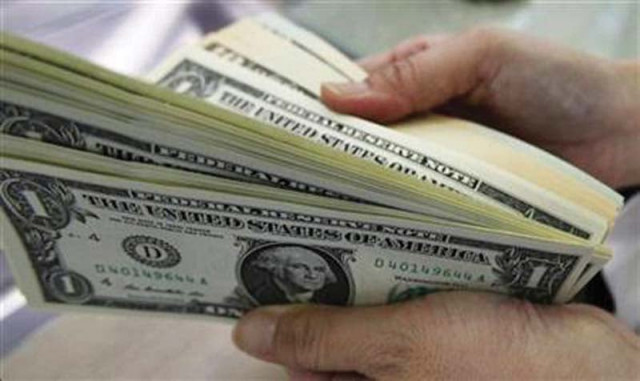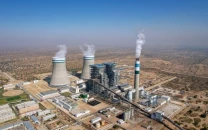The case of currency fluctuation
Selective capital control required to curb speculative pressure

A host of international and domestic factors are associated with short-term currency volatility. PHOTO: REUTERS
The short term fluctuation reflects the psychology of a portfolio investor or speculators who tread in high risk. This volatility, however, may mar the “cautious optimism” of entrepreneurs in Pakistan. There are a number of factors associated with this volatility including monetary easing in the US, ease of capital flow in Pakistan and speculation.
Pakistan, IMF complete sixth review for EFF programme
First, the policy of Quantitative Easing (QE), which has held short term interest rate in the US close to zero from 2008 to 2015, has weakened US dollar among the basket of currencies. As a consequence, the financial capital flew out of the U.S to developing countries in order to get the benefit of higher interest rates.
However, the news of winding down of QE has been circulating in the press since late 2014. As the interest rate in the US is on the verge of being increased, financial capital has started flowing back to the US. As a result, the US dollar is appreciating slowly among the basket of currencies. That is reason US dollar is appreciating vis-à-vis the Pakistani rupee.
Another ‘unintended consequence’ is the volatility in the global equity and currency markets and Pakistan is not an exception.
Second, the volatility is also linked with the ‘capital account liberalisation’ in Pakistan. Capital account liberalisation is the ease of flow of foreign direct investment (FDI) and foreign portfolio investment (FPI) in and out of the country. FDI is good for a developing country since it is long term in nature and enables transfer of technology and management practices. On the other hand, FPI is short term in nature which normally brings speculative bubble in the equity market of a developing country.
Pakistan started to liberalise its “capital account” in the mid-1990s. From 2002 to 2008, the rupee remained stable owing to decent inflow of FDI, while FPI remained sporadic. Then comes the global financial crisis of 2008, FDI flows into Pakistan started to decline. However, FPI remained high, especially with the capital flight from US owing to QE, which meant long winded booms and dampened volatility in the stock market.
The beginning of 2015 witnessed a reversal of FPI from Pakistan, which has increased volatility in Karachi Stock Exchange (KSE). In the last couple of months, equity market volatility coincided with the currency market.
Third, speculations are rife in currency markets. The speculators try to predict the direction of currencies and bet accordingly to maximise their profits. They try to guess the ‘psychology’ of market. If they become successful, they maximise their returns.
If most speculators become convinced that a currency would weaken in future they will short (sell) that currency, which will further devalue it. This is known as the “bandwagon effect”.
In other words, it means that speculators do something primarily because other speculators are doing it, regardless of their own beliefs and convictions. This ‘bandwagon effect’ is attributed to speculative attack on the currency.
In order to avoid speculative attack on the currency, multilateral institutions advise to maintain a certain amount of foreign currency reserves. The central bank can intervene into the currency market to counter the bandwagon effect by drawing down on reserves.
Building up reserves: Pakistan likely to issue $1b in Eurobonds in fiscal 2016
In a nutshell, a host of international and domestic factors are associated with short term currency volatility. In order to avoid a speculative attack, “selective capital control” is required. The case of Chile is instructive in this regard.
Chile introduced a selective capital control to tax the short term portfolio flows which, in turn, stabilised its national currency.
The writer is an Assistant Professor of Economics at Lums
Published in The Express Tribune, December 7th, 2015.
Like Business on Facebook, follow @TribuneBiz on Twitter to stay informed and join in the conversation.



















COMMENTS
Comments are moderated and generally will be posted if they are on-topic and not abusive.
For more information, please see our Comments FAQ